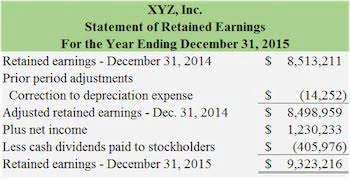
Look at the functionality offered by the Predict360 Audit management software and learn how your organization can do audits at accounting a better pace with fewer resources. The auditors then use the model to establish relationship between the risks and take action to reduce overall audit risk to an acceptable level. As we will see in the analysis below, auditors plan and perform their audit to keep audit risk at an acceptably low level. If inventory is stolen without management knowing, the inventory account on the balance sheet will be overstated. Auditors would therefore plan their audit procedures to focus on the existence assertion.
- Control risk played a major part in the Enron scandal – the people providing the misleading numbers were widely respected and some of the most senior people in the organization.
- This means auditors perform more detailed tests to verify the account’s assertions.
- These strategies include the use of professional skepticism, the application of analytical procedures, conducting substantive testing, and obtaining corroborative evidence from reliable sources.
- The volatility of the business landscape means that an audit’s recommendations might become obsolete by the time they’re published.
- When control risk is assessed as high, auditors will need to perform more extensive substantive procedures to obtain sufficient evidence about the accuracy and completeness of the financial statements.
How to calculate audit risks?
Audit risk is the risk that auditors will issue the wrong opinion on the financial statements. For example, this would occur if an auditor issues an unqualified opinion (saying the financial statements are materially correct) when the financial statements are materially misstated. The auditor then assesses the control risk, which is moderate due to the company’s implementation of effective internal controls and procedures, such as regular employee training, quality control checks, and documentation practices. This is the risk that a material misstatement will not be prevented or detected by a company’s internal controls. Instead, it is influenced by the design and effectiveness of the company’s control environment, including the tone at the top, control activities, and monitoring. Detection risk forms the residual risk after taking into consideration the inherent and control risks pertaining to the audit engagement and the overall audit risk that the auditor is willing to accept.
Audit Risk Models: Understanding and Application

Inherent risk is the risk that a client’s financial audit risk model statements are susceptible to material misstatements in the absence of any internal controls to guard against such misstatement. Inherent risk is greater when a high degree of judgment is involved in business transactions, since this introduces the risk that an inexperienced person is more likely to make an error. It is also more likely when significant estimates must be included in transactions, where an estimation error can be made. Inherent risk is also more likely when the transactions in which a client engages are highly complex, and so are more likely to be completed or recorded incorrectly.

Relationship Between Acceptable Audit Risk and Audit Assurance

Finally, this Record Keeping for Small Business risk is present when a client engages in non-routine transactions for which it has no procedures or controls, thereby making it easier for employees to complete them incorrectly. However, the risks of material misstatement of the financial statements are the same for both the audit of financial statements and the audit of internal control over financial reporting. The audit risk model provides a risk-based audit approach to assess the risks of material misstatement to determine the scope of audit procedures to perform.
- Again, you’ll want to document your understanding of your client’s internal control, including the control environment.
- In this case, auditors will not perform the test of controls on the bank reconciliation.
- This book is authored by well-known authors in audit, accounting, and finance areas, Karla M. Johnstone, Ph.D., C.P.A. The author holds a Ph.D. in accounting and information systems.
- Inherent risk refers to the risk that could not be protected or detected by the entity’s internal control.
- We can also say we are 98.75% confident that our audit procedures will detect a material misstatement, if one exists.
- Auditors are required to assess those kinds of risks and set up audit procedures to address inherent risks properly.
- This means auditors can reduce their substantive works and the risk is still acceptably low.
By diligently applying the Audit Risk Model, auditors can enhance the quality and reliability of financial statement audits. This structured approach empowers auditors to make informed decisions about the nature and extent of audit procedures, ultimately providing stakeholders with a level of assurance regarding the accuracy of financial information. Audit risk assessment shows that internal control systems are not efficient enough to reflect misstatements.






